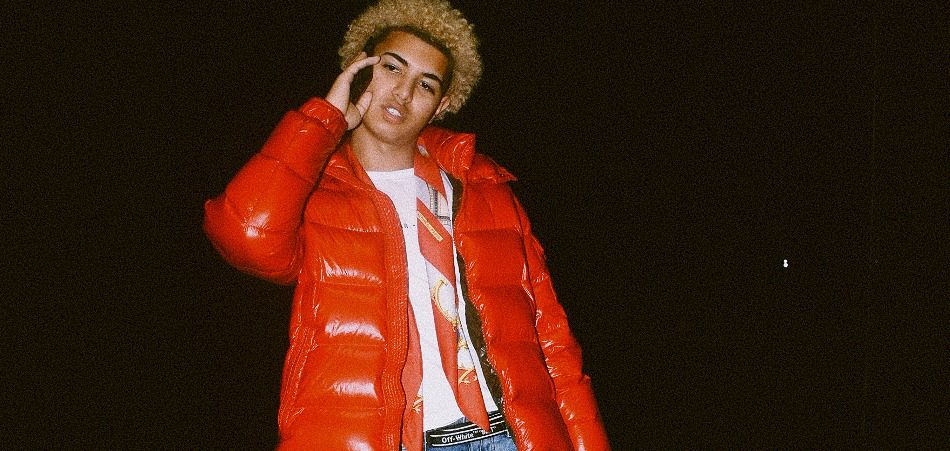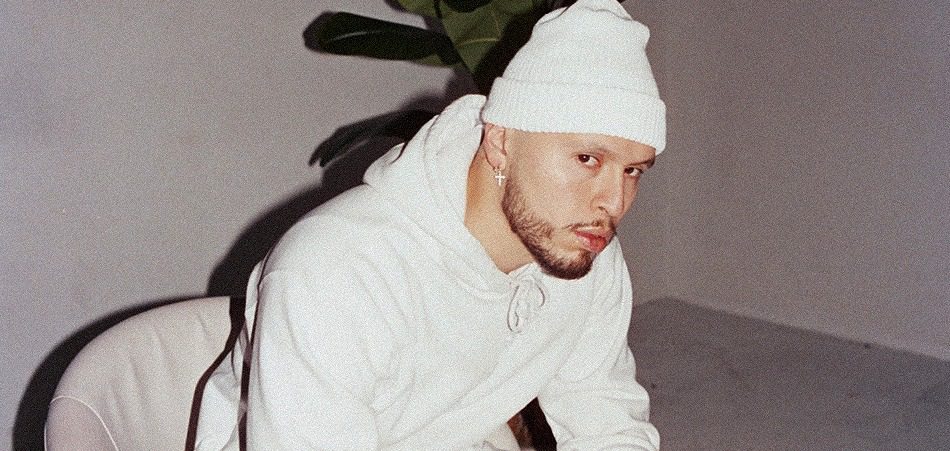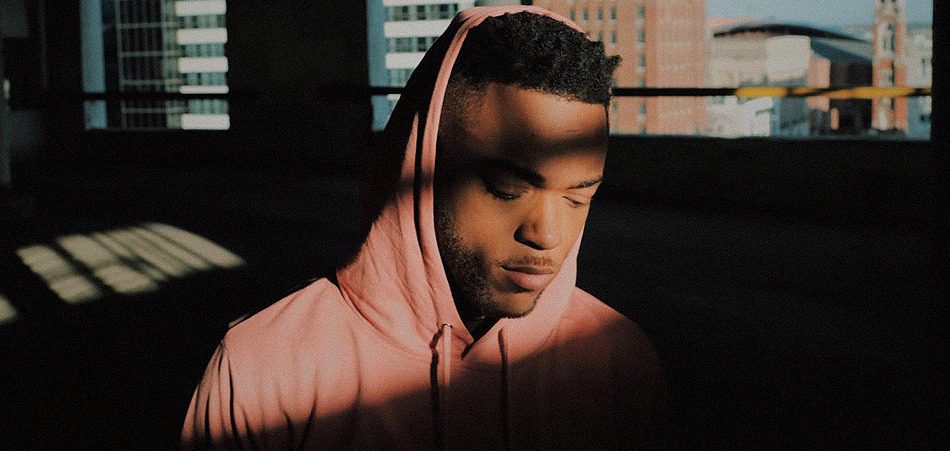Beauty is all around us, but have you ever wondered what makes something beautiful? Is it a person’s perspective, tangible properties of the entity in question, or the ability in and of itself to be able to define something as beautiful that makes it so? In talking to alternative rockstar Briston Maroney about his debut album Sunflower and its accompanying short film, he described his perception of beauty, which seems to have affected not only the making of this project, but also how he lives his life.
Sunflower as a whole speaks to the lived experience, and with that comes both pain and beauty. However, at no point in the record does Maroney drag you down or lift you up, but with the fluctuation of emotion throughout he meets you exactly where you are. As the record primarily deals with the twists and turns of love, mental wellbeing, and growing up, it’s all about finding the beautiful in between the crevices of pain and mundanity. “I think it’s much harder to see beauty without having something to compare it to a lot of times, just with how our brain works,” Maroney says.
The album’s accompanying short film is a testament to that. Directed by Joey Brodnax, Where To Aim When Taking A Stab At Beauty takes us through ten different planes of existence, five in which you can find beauty, and five inverses that allow for the perception of the beautiful. Though there isn’t a ton of elaboration about each source, such as human enchantment or its inverse, failed alchemy, the combination of the visuals and Maroney’s music creates its own dimension in which there are no wrong answers.
In creating the video, Brodnax and Maroney started with a distinct plot line, but as they began to work it morphed into something else entirely, with the initial tentpole ideas still holding it up. “I think it’s all really big picture, really existential for me and then the shavings of that kind of blend together to be like, ‘Oh you were thinking about these certain ideas the whole time even if you weren’t really expounding on that.’” This is evident throughout on the most basic of levels. Multiple times throughout our conversation Maroney mentioned that he seeks out beauty in nature and feels the most beautiful in natural environments with loved ones. The short film is a visual manifestation of just that, as much of it is set outside, whether it be a wide open field during “Deep Sea Diver” paddleboarding in a cave during “Freeway” or dancing with his friends and fellow musicians, Samia and Raffaella, during “It’s Still Cool If You Don’t.”
However, the project is more than just a manifestation of those things. While the record speaks to the human experience sonically and thematically, the videos appeal to the senses, making every message hit that much harder. While some videos focus on emotionality like “Cinnamon” others focus on amplifying the sonic landscape by manipulating your sight, like “Bottle Rocket.” “The ‘Cinnamon’ video was filmed in a beautiful place and that song was just about the beauty about relationships and love in general. The ‘Bottle Rocket’ video definitely correlates with the insanity of that song. And the hypnotic sounds in that song I think immediately set off something in Joey’s brain to associate it with being hypnotized. I loved that connection.”
Maroney and Brodnax take it a step further when applying each source of beauty or its inverse to each song during the video. For example, “Bottle Rocket,” the third segment of the video, was assigned skilled displays as its source of beauty. The resulting visual put us through hypnosis and brought us into Maroney’s world, putting us all on the same playing field of perspective as he sings about taking accountability for the trajectory of his life, “Come to find I’m the one that will decide my life / It just takes a little time / It’s a bottle rocket.” During the latter half of the film we experience the skilled displays inverse: hidden internalizations. While Maroney sings “Why,” a song about wanting to be someone else to escape your life, we are provided with the video’s treatment: to project the video onto the wall and watch it through a false car door. Here Maroney is putting up a wall between him and us, keeping us at arm’s length as we watch from an outsider’s perspective, the complete opposite of what he was aiming to achieve during “Bottle Rocket.” In reference to the visual for “Why,” Maroney says, “To couple that with a video that’s again pretty self aware and kind of tongue and cheek about literally leaving the treatment in the video like leaving the instructions for how to film the video in the video was I think important to showcase my character and Joey’s character as far as being like, ‘Hey we understand that we’re lucky to get to tell sincere stories,’ and we need to constantly be aware of how fortunate we are to do that.’”
Not taking yourself too seriously is a sentiment that continues throughout, when each time he attempts to be serious, he cuts it with humor. This can be seen when Maroney is eloquently explaining the concept behind the video and then right before they cut, he raises his middle fingers to the camera. Likewise during “It’s Still Cool If You Don’t” when he attempts to make an impassioned speech about “these trying times” a telephone pole falls on him. “A lot of it is us making fun of ourselves or just exploring the parts of us that we find funny or interesting and just really extenuating that element,” Maroney says.
The universe that Maroney and Brodnax created was one that we were able to see ourselves in for better or worse, but the final installment is a compilation of everything, creating something entirely new in the process. Created by Drew Bauml, the visual for “Rollercoaster” takes us through a 3D experience that features multiple digitized Maroneys. It was almost like every part of the film conceptually had been building up to that segment, as we entered a completely new world. “He just really created an entire universe of things that I literally could never have conceptualized in my brain,” he says. “But I think that was perfect for that song cause that song is so much about just kinda like dissociation and just kinda feeling removed from reality. So to put it in a digital crazy world (Laughter). It was really awesome.”
The film is an incredible encapsulation of Maroney’s personality, while the record itself speaks more to his personhood at his core. However, it’s interesting that not once in the thirty four minutes and fifteen seconds that make up the record do we hear him say the name of the album, but he has a very distinct reason as to why. “The biggest thing with using a sunflower as the title was to hand over the reins to life,” he says. “They’re just like undeniably beautiful things and they’re so simple and you don’t have to overthink them.” At the most basic level, Maroney wanted the album to serve a similar purpose. “I love that as the title for the record to open the door to be like, ‘Hey, anyone who wants to analyze this in any way is welcome. But also if you just want this to be a record that accomplishes the same thing as a sunflower in a vase in your house then I want that to be that way too.’”
For him personally the record serves as a time capsule. “It is exactly where I was at when we were recording it, like in my heart. It summed up exactly who I was at that time. Like undeniably kinda just for better or for worse showed who I was and who I am still. I know it’ll be a mark personally of being able to look back and see how I viewed the world and how that will change and grow. So yeah it’s like a timestamp.” He may even get a more permanent reminder of the album tattooed on him. “I think all of my friends that have listened to the record always call ‘Sinkin’ the ‘Mama had a baby’ song,” as that lyric is a standout on his song “Sinkin’.” “So probably that, if it’s connected to people up to that point (Laughter). Just a chest piece on like the wings of an eagle. Yeah it’ll be awesome (Laughter).”
The exciting thing about creating a body of work that deals heavily with themes that can span a lifetime is that the music and story can continuously evolve for both the creator and listeners, and that’s just what Maroney has done. In his newest adaption of “Bottle Rocket” he teamed up with Manchester Orchestra, to give us a more stripped back, intimate take on what it means to come into yourself and take control over your life. You’ll even be able to see this evolution in real time when he goes on tour later this year and early next.
Circling back to the original question of what makes something beautiful, Briston Maroney’s project answers the question by not answering the question, time and time again. Over the course of 10 songs and a forty two minute video, he asks us to consider beauty, but never outwardly defines it, leaving it up to us to do that for ourselves.
Featured Image by Angelina Castillo
Connect with Briston Maroney: Spotify | Instagram | Twitter | Facebook










